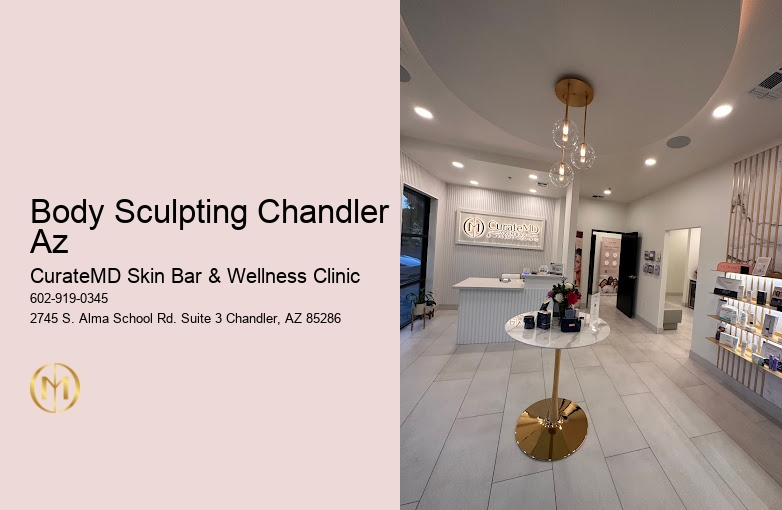

CurateMD Skin Bar and Wellness Clinic – Where Beauty Meets Wellness
At CurateMD Skin Bar and Wellness Clinic, we combine science and artistry to help you achieve your aesthetic and wellness goals. As a provider-owned medical spa, we are passionate about delivering cutting-edge treatments tailored to each patient’s unique needs. Our expert team is here to guide you on your journey to looking and feeling your best.
Our Services:
Aesthetic Treatments: Reduce fine lines, restore volume, and rejuvenate your skin with advanced cosmetic procedures.
Advanced Skin Care: Improve skin texture, tone, and overall radiance with facials, laser treatments, and customized skincare regimens.
Body Contouring: Reshape and refine your silhouette with innovative, non-surgical body sculpting techniques.
Weight Management: Get expert support with tailored weight loss programs for sustainable results.
Bio-Identical Hormone Therapy: Optimize your well-being with personalized hormone treatments.
Comprehensive Wellness Services: Holistic solutions designed to improve your health and enhance your lifestyle.
At CurateMD, we believe that every patient deserves a customized approach. Our consultation process ensures we understand your goals and craft a plan that delivers the best results.
Your journey to beauty and wellness starts here. Visit CurateMD Skin Bar and Wellness Clinic today and discover how our expert team can help you achieve lasting confidence and vitality. Schedule your consultation now!
Understanding Chemical Peels Chemical peels are specialized treatments that involve applying a chemical solution to the skin, which exfoliates and eventually peels off. This process reveals a smoother, more youthful layer of skin beneath. Chemical peels can address various skin concerns such as acne scars, aging signs, hyperpigmentation, and uneven skin texture. The frequency of receiving a chemical peel depends on several factors including the type of peel, individual skin concerns, and recovery time.
Types of Chemical Peels There are generally three types of chemical peels: superficial (light), medium, and deep. Superficial peels require less downtime and can be performed more frequently – sometimes every two to five weeks. Medium peels penetrate deeper into the skin and typically necessitate a longer healing period; thus, they can be done every three to nine months. Deep peels provide the most dramatic results but also come with significant downtime; these treatments are often spaced out over years rather than months.
Individual Skin Concerns and Goals The condition being treated will also influence how often you should get a chemical peel. For instance, someone who wants to reduce fine lines or mild discoloration may benefit from more frequent light peels. Conversely, for deeper wrinkles or scars, fewer sessions with medium or deep peels might be recommended. A skincare professional can assess your specific needs and suggest an appropriate schedule based on your personal goals.
Professional Guidance is Key It’s crucial to follow the advice of a qualified dermatologist or skincare specialist when deciding on the frequency of chemical peels. They will consider your skin type, tolerance to treatments, lifestyle factors such as sun exposure habits, and any potential risks associated with repeated procedures. Overdoing chemical peels could lead to irritation or damage your skin's natural barrier function. Adhering to professional recommendations ensures that you achieve optimal results while maintaining healthy skin integrity.
| Treatment | Description |
|---|---|
| Body Sculpting Chandler AZ | Non-invasive body contouring treatments available in Chandler. |
| Cellulite Treatment | Various treatments to reduce cellulite appearance and improve skin texture. |
| CO2 Laser | A resurfacing laser treatment for deep wrinkles and scars. |
| BBL Laser | BroadBand Light therapy for pigmentation, sun damage, and skin tightening. |
| Vampire Facial | A PRP (platelet-rich plasma) facial that boosts skin rejuvenation. |
Skin, the human body's largest organ, serves as the first line of defense against environmental hazards. It acts as a protective barrier that shields our internal systems from pathogens, ultraviolet radiation, and physical injuries. Moreover, it plays a crucial role in regulating body temperature and fluid balance through the processes of sweating and insulating.
Understanding skin begins with its structure. It is composed of three primary layers: the epidermis, dermis, and hypodermis. Each layer has distinct functions and cell types that work in harmony to maintain skin's overall health. The epidermis is responsible for creating skin tone and providing initial defense against external factors, while the dermis houses blood vessels and nerves that support sensation and nourishment.
Various conditions can affect skin health ranging from temporary irritations like rashes to chronic disorders such as eczema or psoriasis. Acne is another common issue that predominantly affects adolescents but can persist into adulthood. These conditions not only impact physical well-being but also emotional health due to their visibility.
Maintaining healthy skin involves adopting a consistent skincare routine tailored to individual needs based on skin type—oily, dry, or combination—and concerns such as sensitivity or aging signs. Cleansing, moisturizing, and applying sunscreen are fundamental steps for protecting the skin’s integrity and enhancing its appearance.
Diet significantly influences skin condition; certain nutrients are essential for maintaining its strength and elasticity. Vitamins A, C, E along with minerals like zinc contribute to cell regeneration and repair. Hydration is equally important; drinking ample water ensures that the skin remains supple and clear.
Lastly, across cultures throughout history, skin has played a symbolic role in identity and beauty standards. Different societies have varying perceptions related to coloration, texture, scarring patterns or tattoos—which often carry deeper meanings about individuality or social status within those communities.

Lifestyle changes, topical creams, and professional treatments like laser therapy or microneedling can help reduce cellulite.
Cosmetic surgeons use minimally invasive procedures such as laser-assisted liposuction, subcision, and ultrasound-based treatments.
Common side effects include mild swelling, bruising, redness, and temporary muscle weakness.